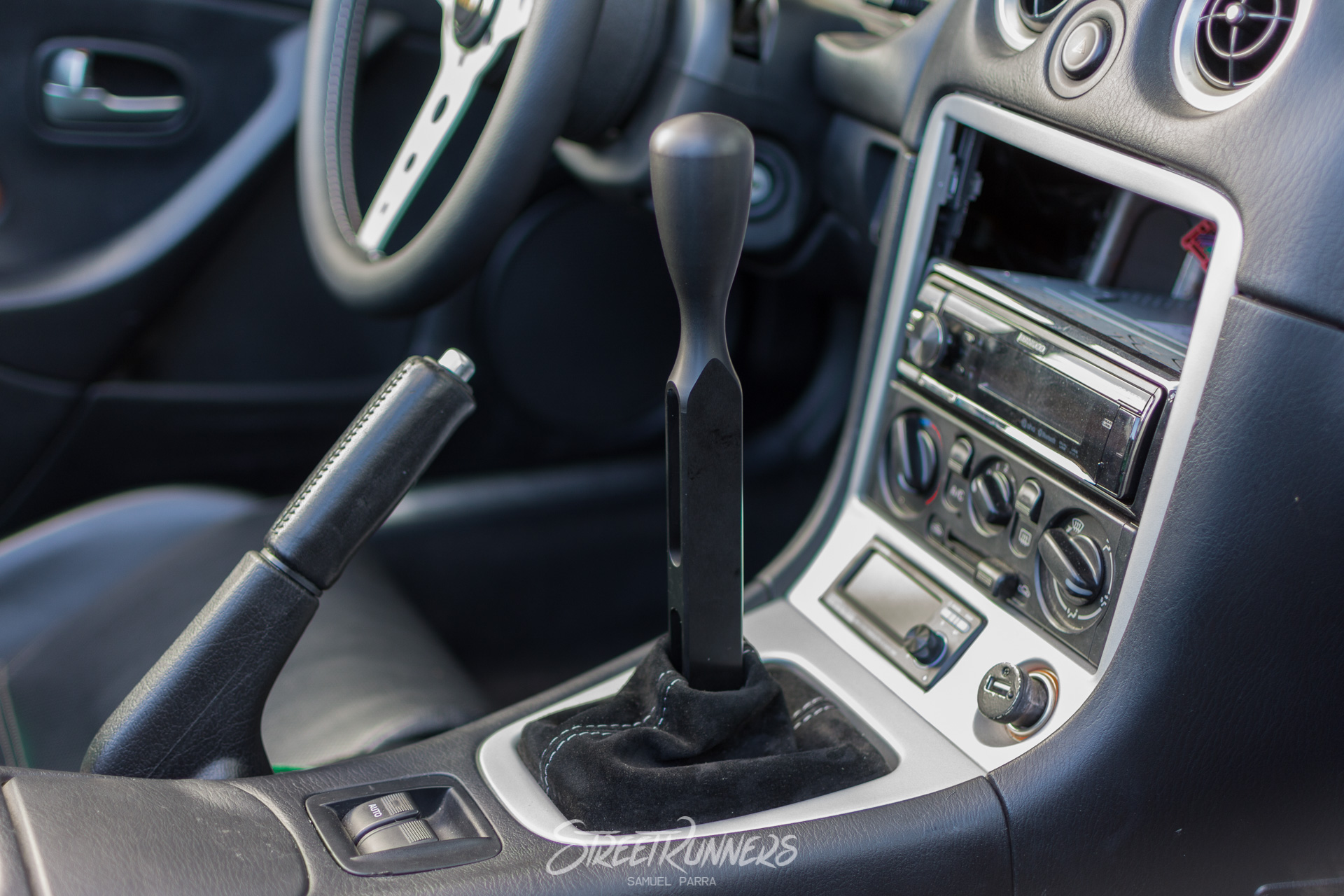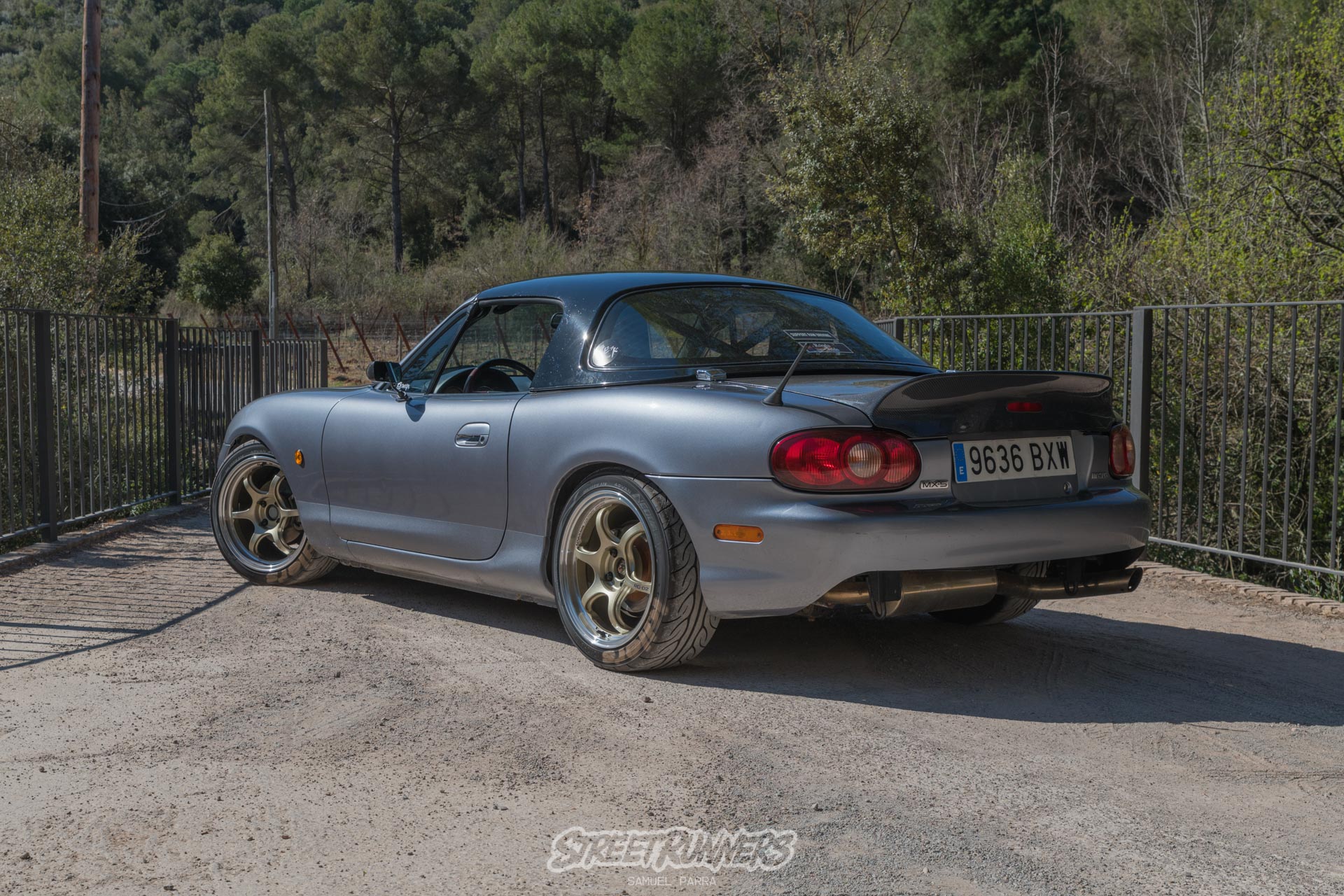IRP MX-5 short shifter kit: installation and review
- Samuel Parra
When, some years ago, I started looking for an RWD car which was fun and had a good amount of aftermarket parts, the Mazda Miata was the obvious choice. At that time they could still be found for a reasonable price, and once I found one that matched what I was looking for, I went ahead and bought it.
The car is a joy to cruise in, but when on spirited drives or in the track, its flaws come to light: it’s not a fast car, and the brakes aren’t spectacular either. That’s the truth. The best thing about this car is the gearbox: direct and precise, it feels great to change gear after gear on twisty roads, where the car feels like at home. I still haven’t met anyone who has something bad to say about the MX-5 shifter feel.
That’s exactly why I was so surprised when I saw that IRP had built a Miata-specific short shifter kit. With so many things to improve, why start with its strongest point?
When searching for reviews, I didn’t come across any. Apparently, the kit had just been released and nobody had had
the chance to test it yet. So after some emails, I placed an order for two kits, one for my car, an NB (second
generation), and another one for my friend’s NA (first generation). The kit is compatible with both models and all the
engines that were offered at the dealership, although only with the 5-speed gearbox.
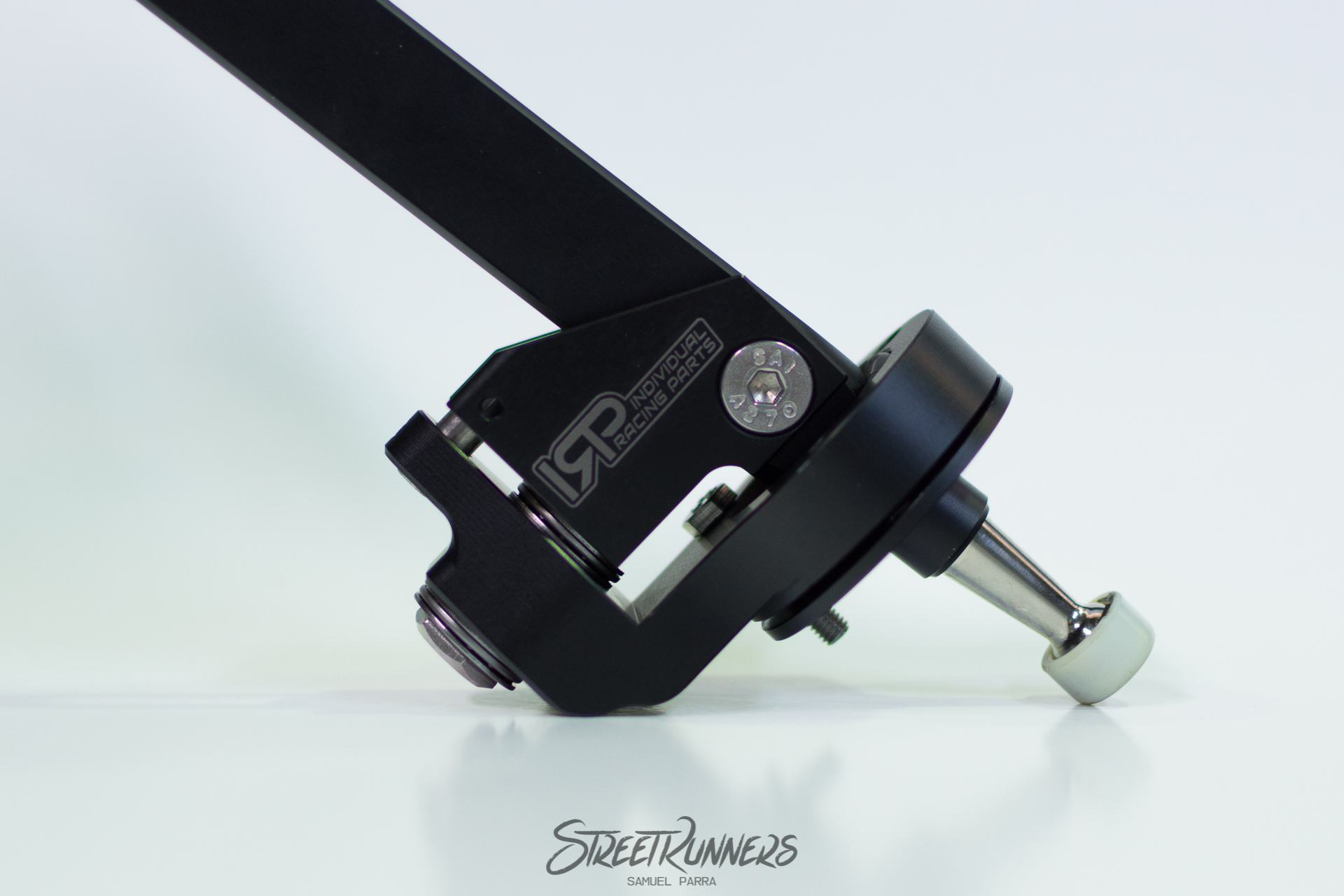 The kit includes the shifter itself, a metal and a rubber gasket and longer bolts which replace the OEM ones.
The kit includes the shifter itself, a metal and a rubber gasket and longer bolts which replace the OEM ones.
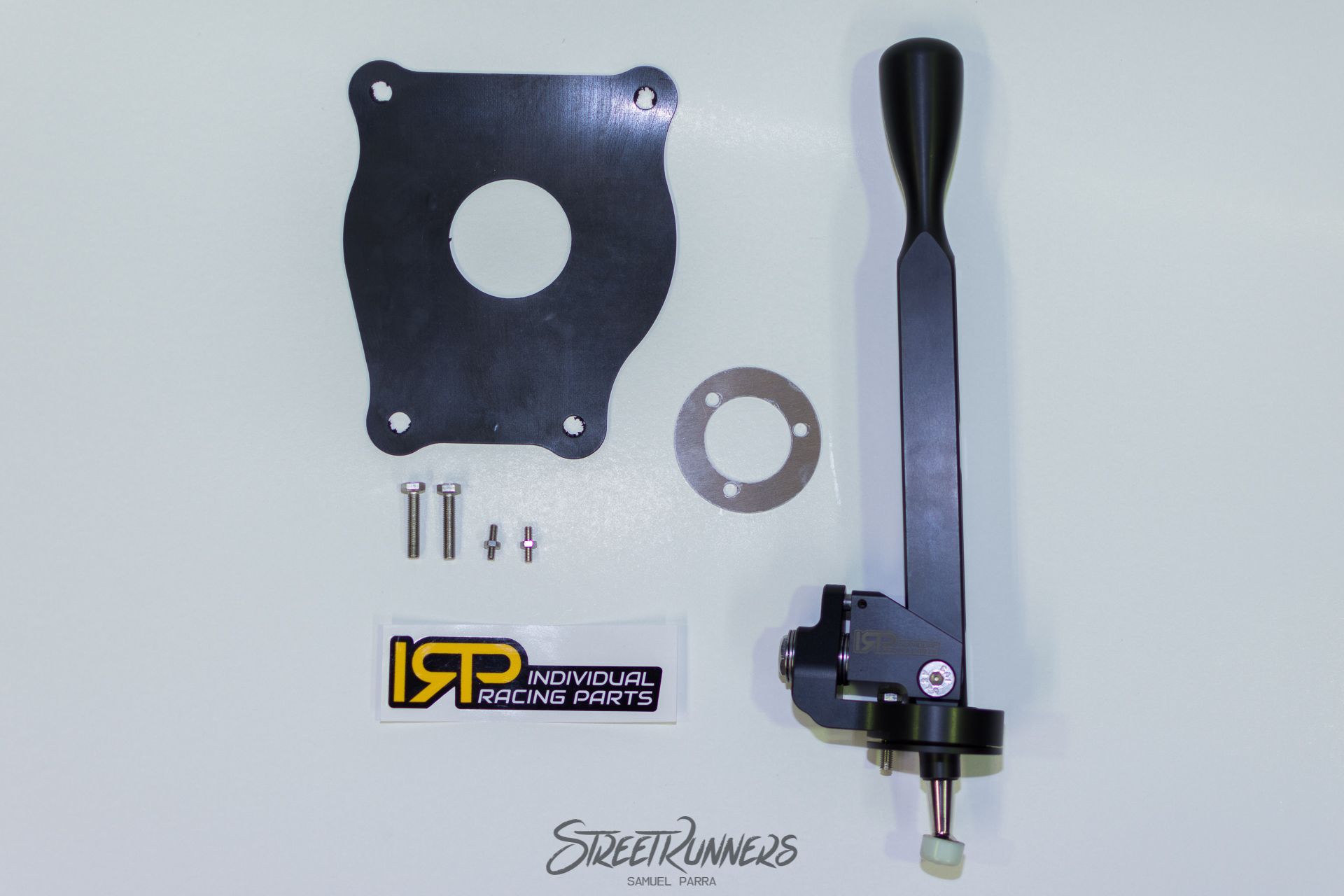
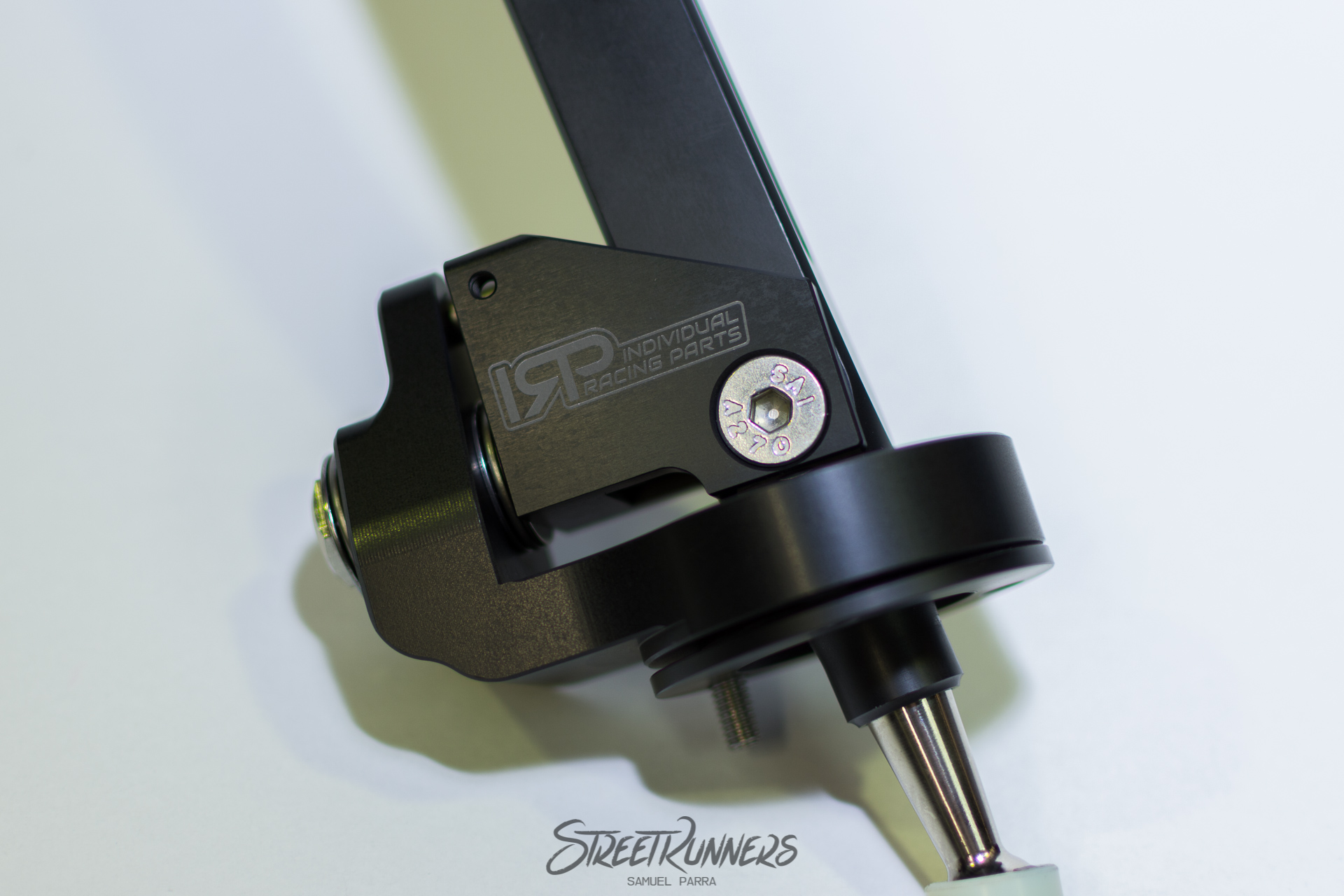 The main difference between this kit and others available for the Miata is that the shifter’s ball bearing position
is higher, which leads to maximum decreased travel-gear with a tight and direct feeling for the shifter and gearbox.
On top of that, unlike other short shifter kits, because of the design of the IRP kit, the gearbox synchros and
selector forks are not exposed to greater forces and wear.
The main difference between this kit and others available for the Miata is that the shifter’s ball bearing position
is higher, which leads to maximum decreased travel-gear with a tight and direct feeling for the shifter and gearbox.
On top of that, unlike other short shifter kits, because of the design of the IRP kit, the gearbox synchros and
selector forks are not exposed to greater forces and wear.
On the Miata, the shifter doesn’t use any kind of rods. The shifter itself is bolted to the gearbox and this makes the install quite easy.
INSTALLATION
To install the shifter, both the knob and center console need to be removed. Once you gain access to the shifter boot,
the 4 bolts that hold the outer boot (M10) also need to go. Another 3 bolts hold the shifter in place. Once those 3 are
removed, the whole shifter comes out in one piece.
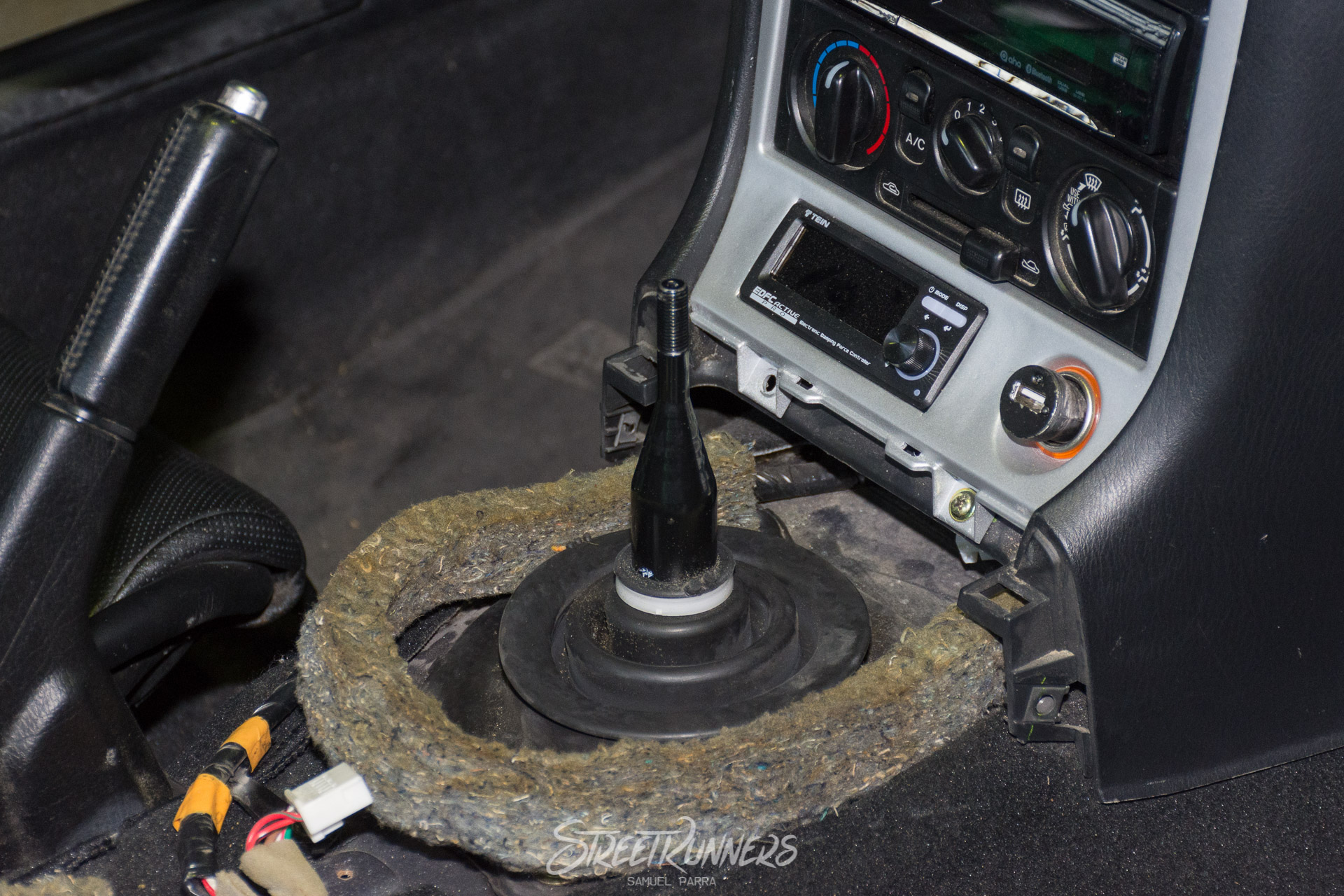
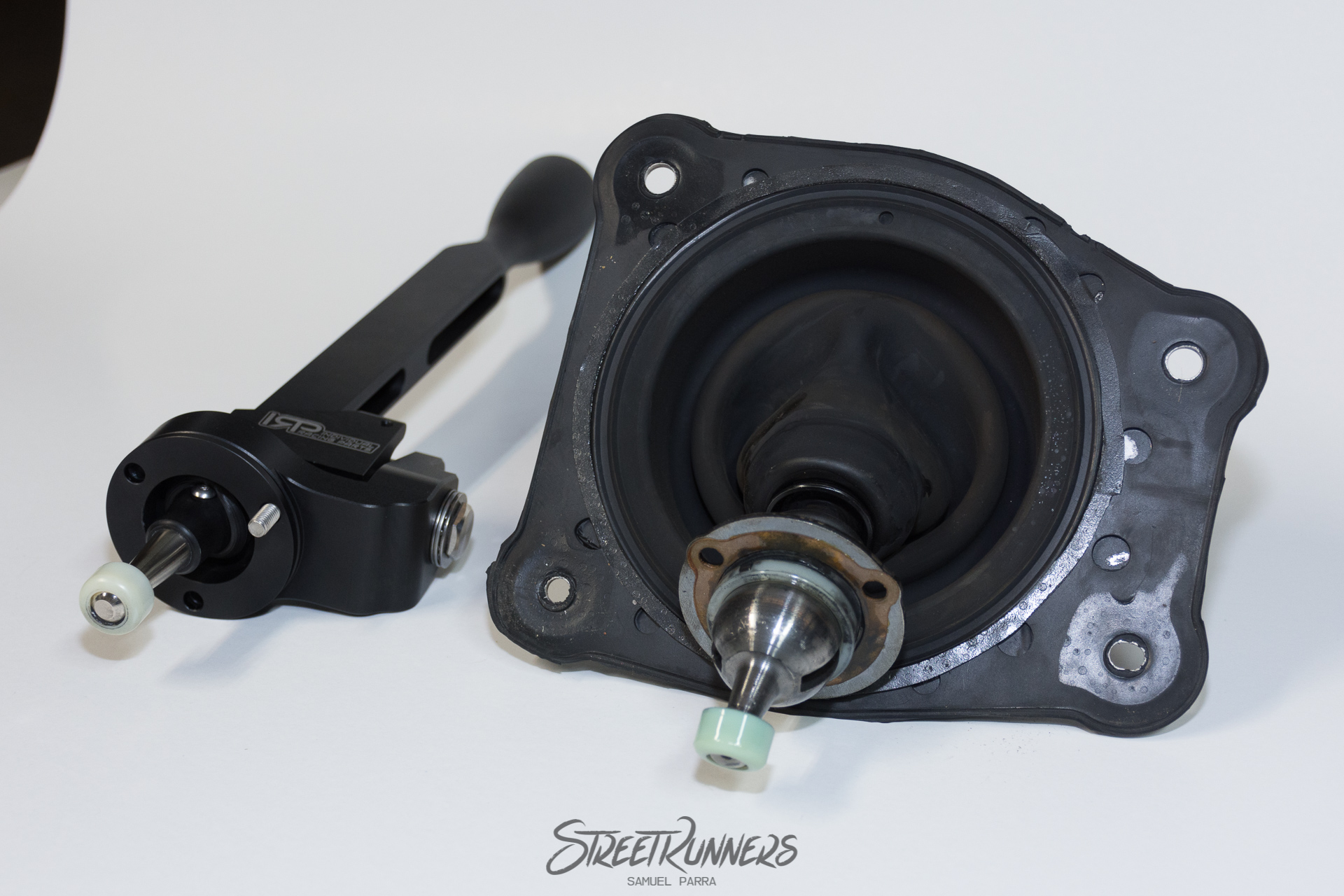
Now for the difficult part: On the NA, there’s a pin that holds the OEM shifter in its place which is no longer
necessary with this kit, so it needs to be pushed back about 5 millimeters using a screwdriver or a hammer if it’s stuck.
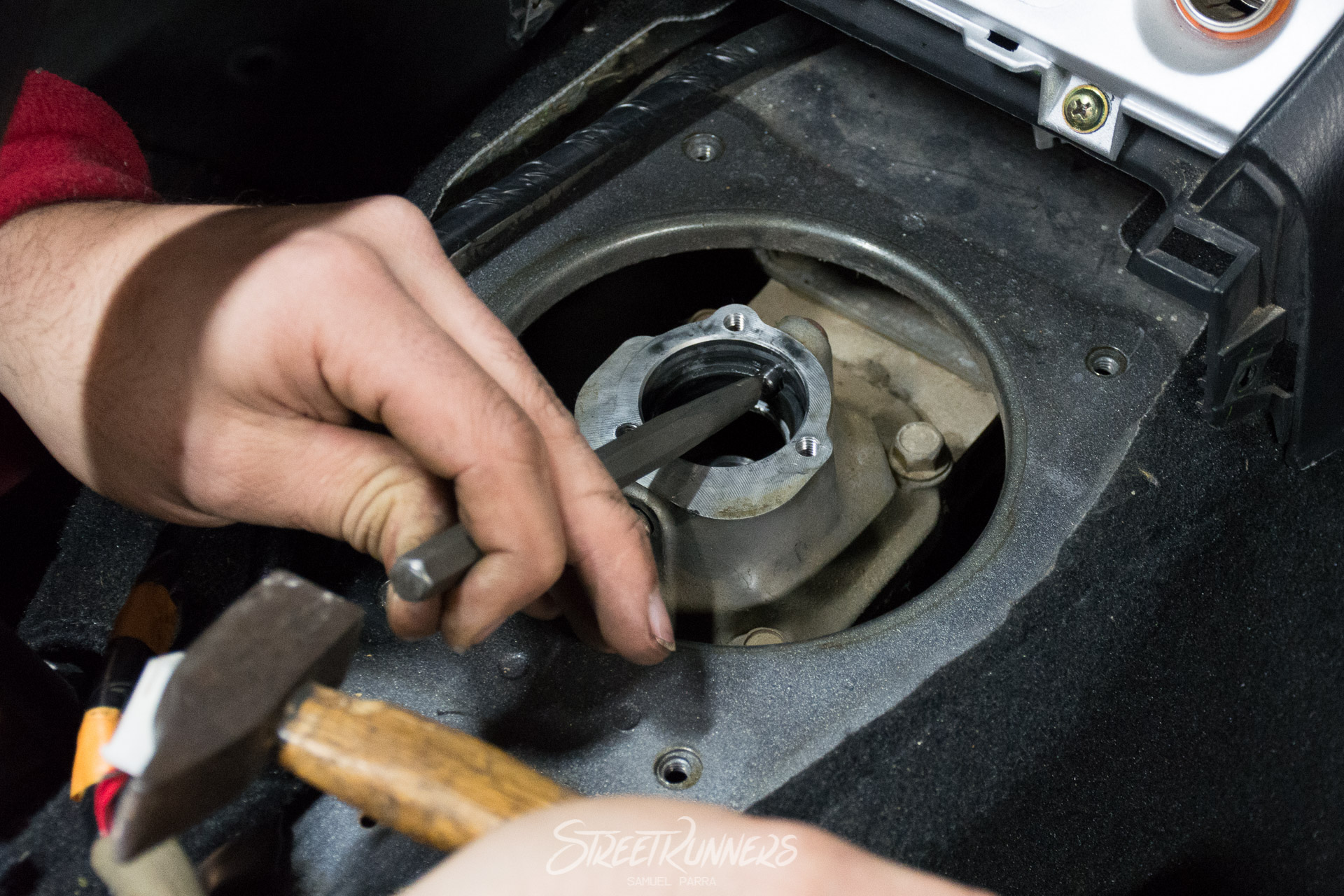 On the NB the process is similar, but its gearbox has two pins instead of one, and both of them have to be pushed.
In my case, I decided to push them until they were flush with the gearbox wall.
On the NB the process is similar, but its gearbox has two pins instead of one, and both of them have to be pushed.
In my case, I decided to push them until they were flush with the gearbox wall.
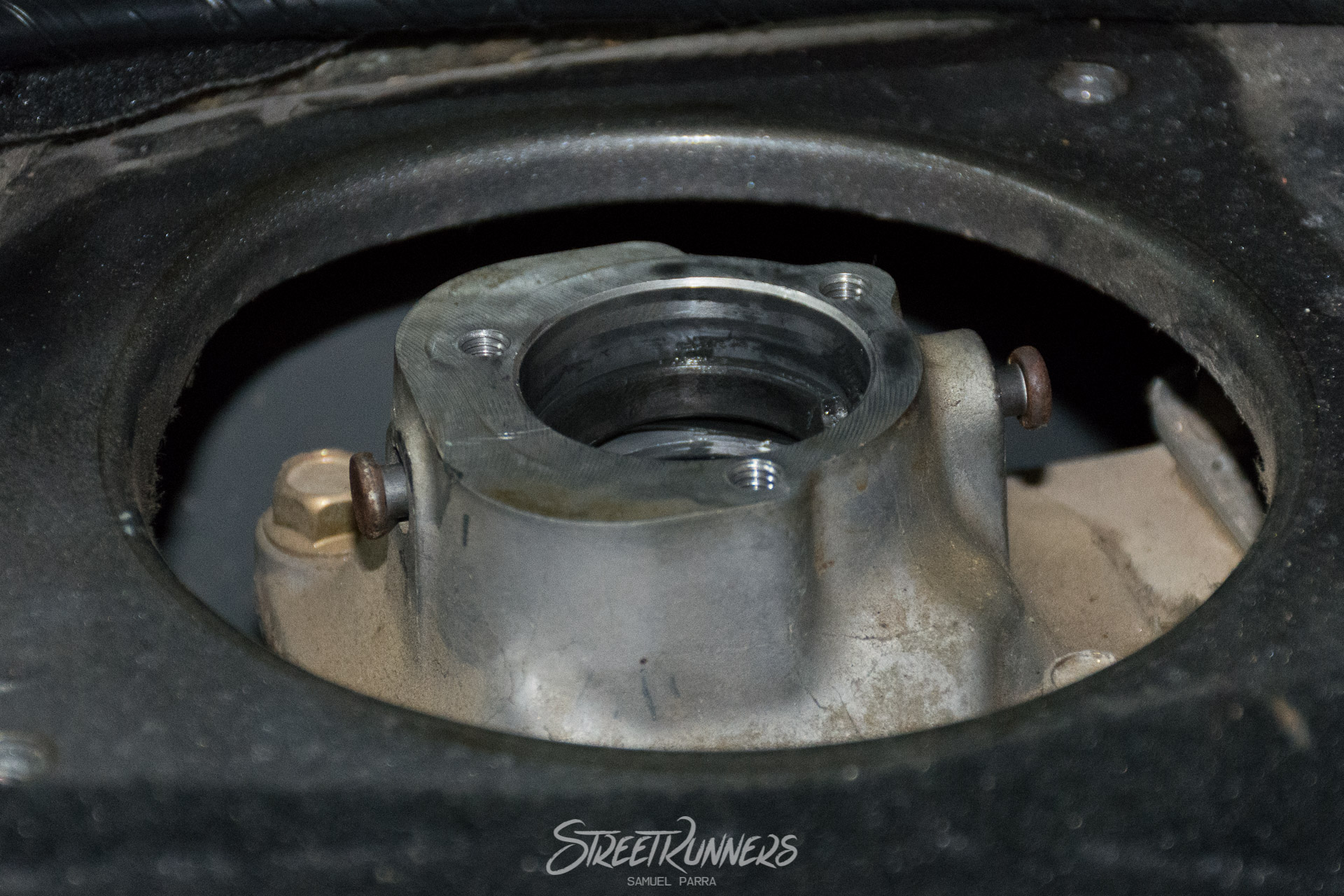 Once the pins have been pushed back the plastic ring that is just
under them needs to be removed too.
Once the pins have been pushed back the plastic ring that is just
under them needs to be removed too.
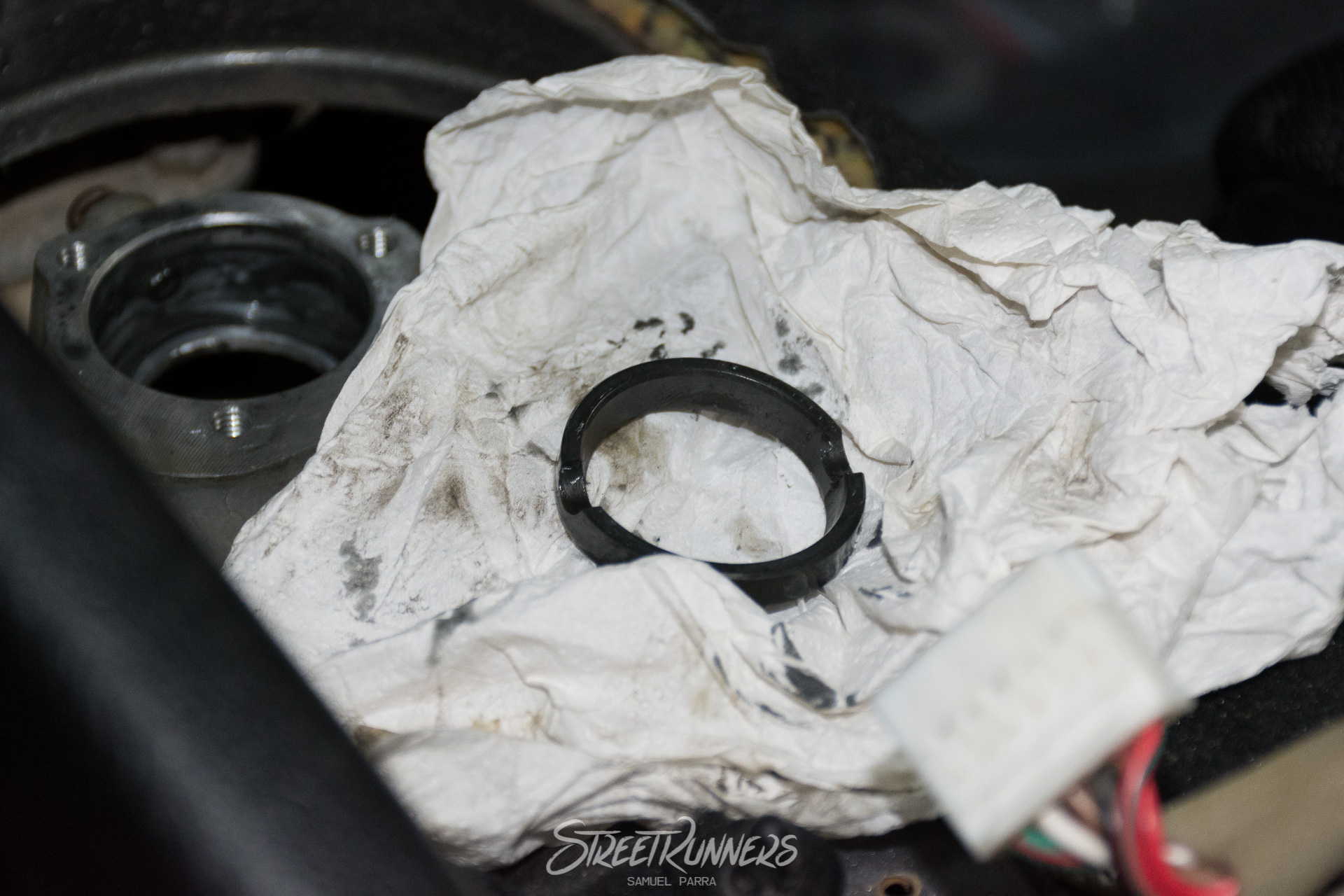 The plastic ring is the last part that needs to be removed in order to put the new shifter. At this point, you should
also change the shifter fluid if you haven’t done so in a while by using a syringe (about 100 milliliters will
come out). Use 75w90 GL5 fluid.
The plastic ring is the last part that needs to be removed in order to put the new shifter. At this point, you should
also change the shifter fluid if you haven’t done so in a while by using a syringe (about 100 milliliters will
come out). Use 75w90 GL5 fluid.
The mounting screw positions in the NA and NB gearboxes differ, so depending on the generation of your car the shifter
will be installed in one position or another.
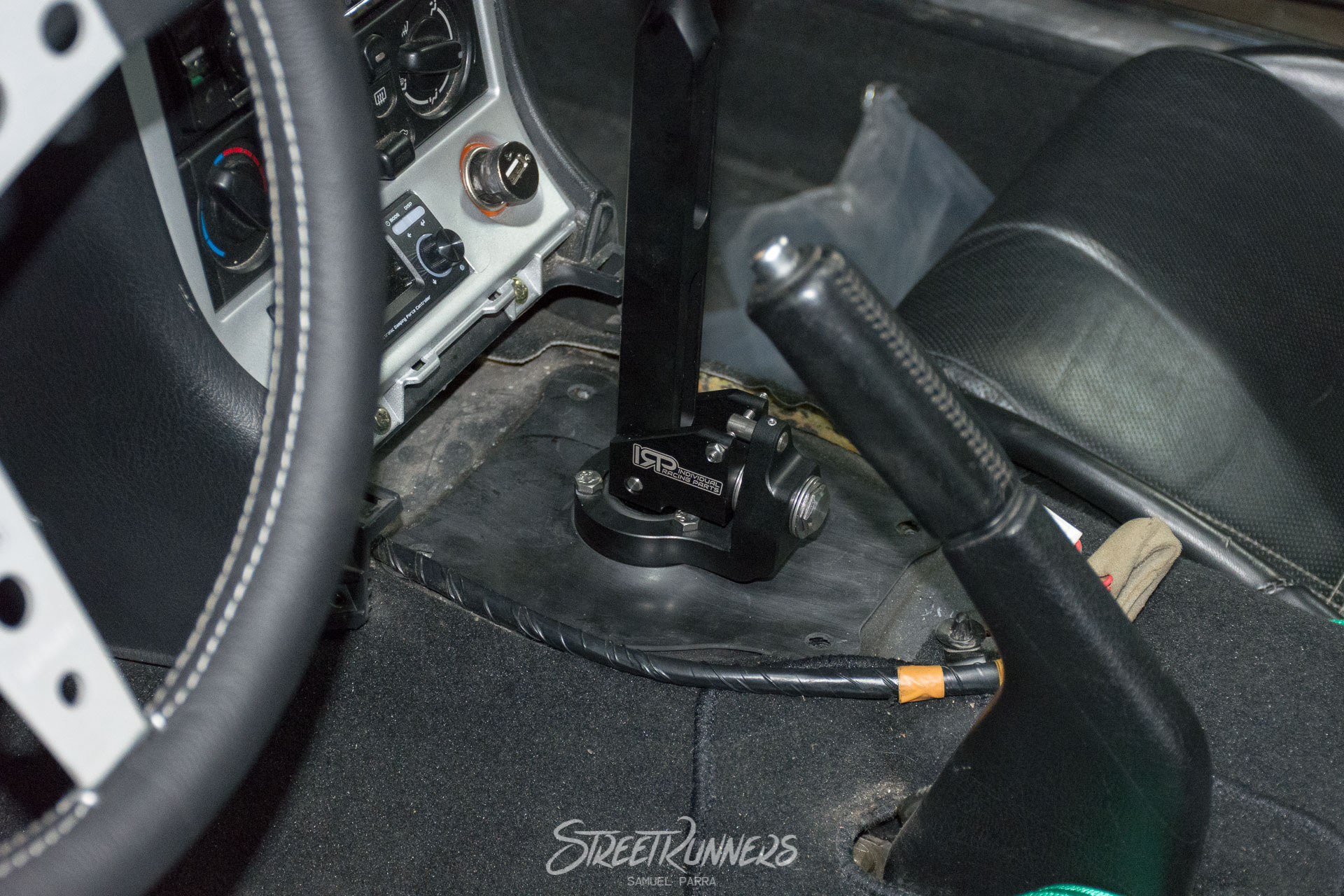 The only thing to take into account is that one of the three screws that hold the shifter in place comes preinstalled
and needs to be tightened using a fixed wrench as there is no space to use a socket wrench.
The only thing to take into account is that one of the three screws that hold the shifter in place comes preinstalled
and needs to be tightened using a fixed wrench as there is no space to use a socket wrench.
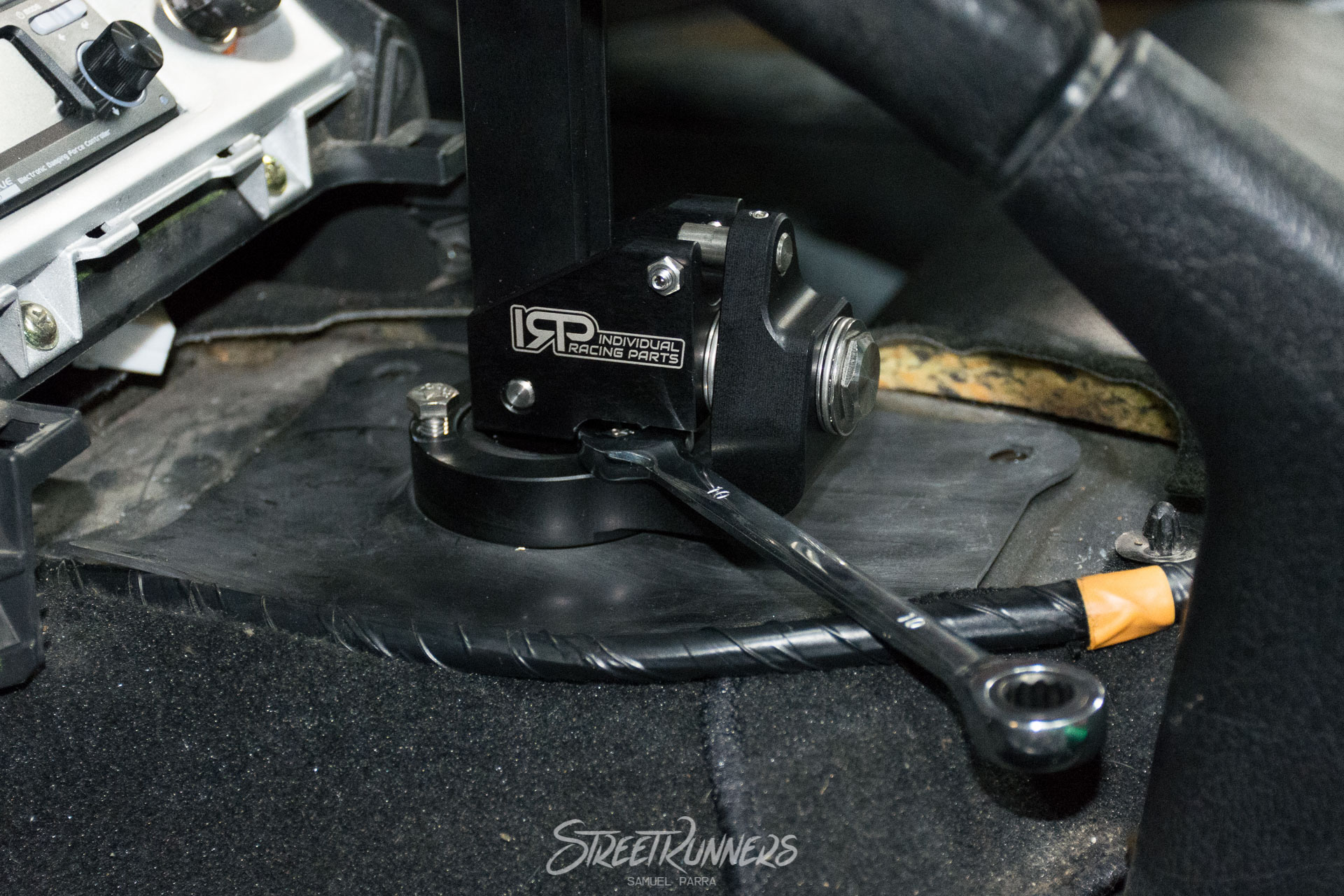 The side travel is adjusted with two small nuts and bolts on each side of the shifter. Thanks to these, the shifter
acts as a sincro saver too. First, you’ll need to put the car in first gear and tighten the opposite bolt (the right
one) until it doesn’t move, fixing it in place with the included nut. Then, repeat the process by putting the car into
reverse and tightening the left bolt.
The side travel is adjusted with two small nuts and bolts on each side of the shifter. Thanks to these, the shifter
acts as a sincro saver too. First, you’ll need to put the car in first gear and tighten the opposite bolt (the right
one) until it doesn’t move, fixing it in place with the included nut. Then, repeat the process by putting the car into
reverse and tightening the left bolt.
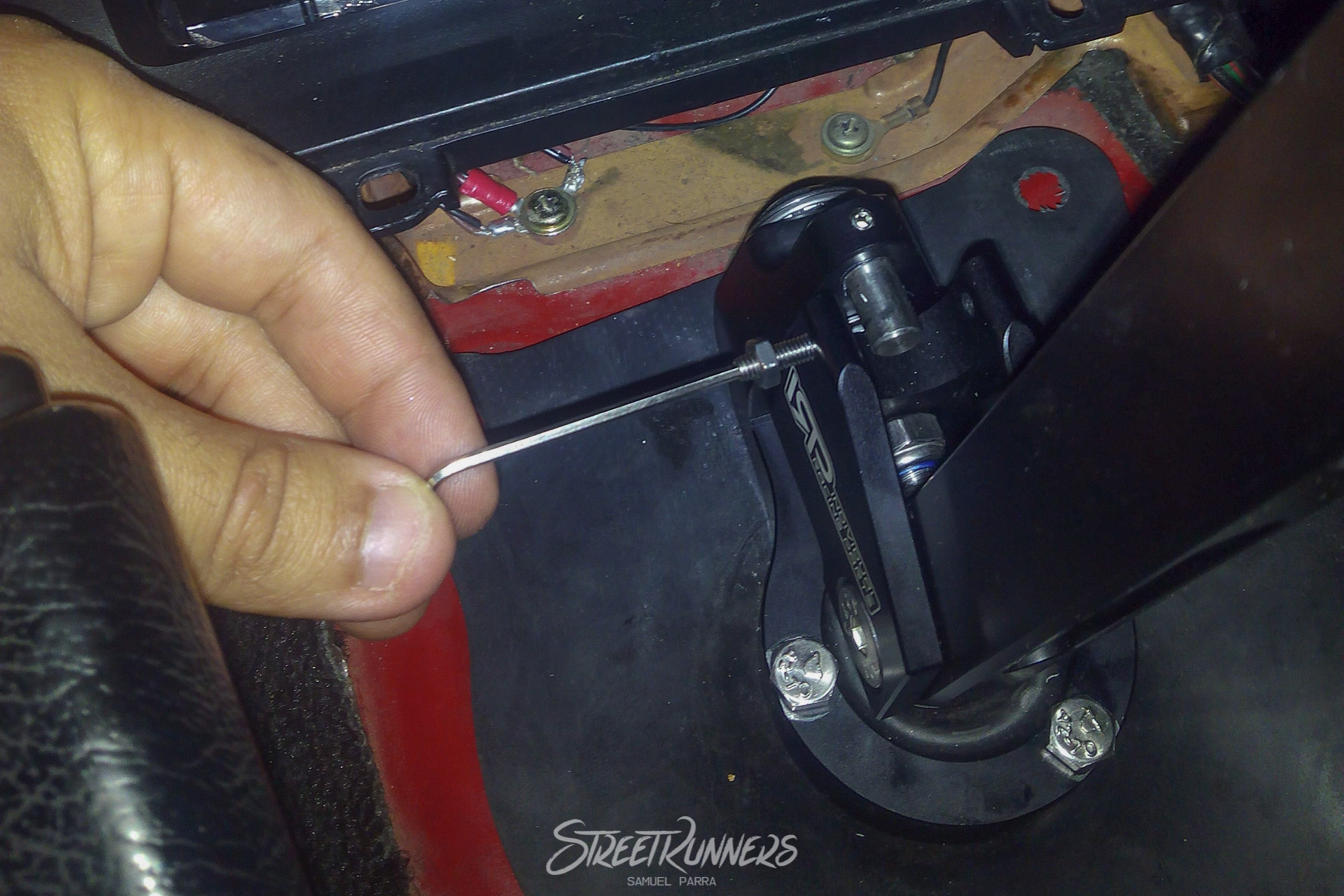
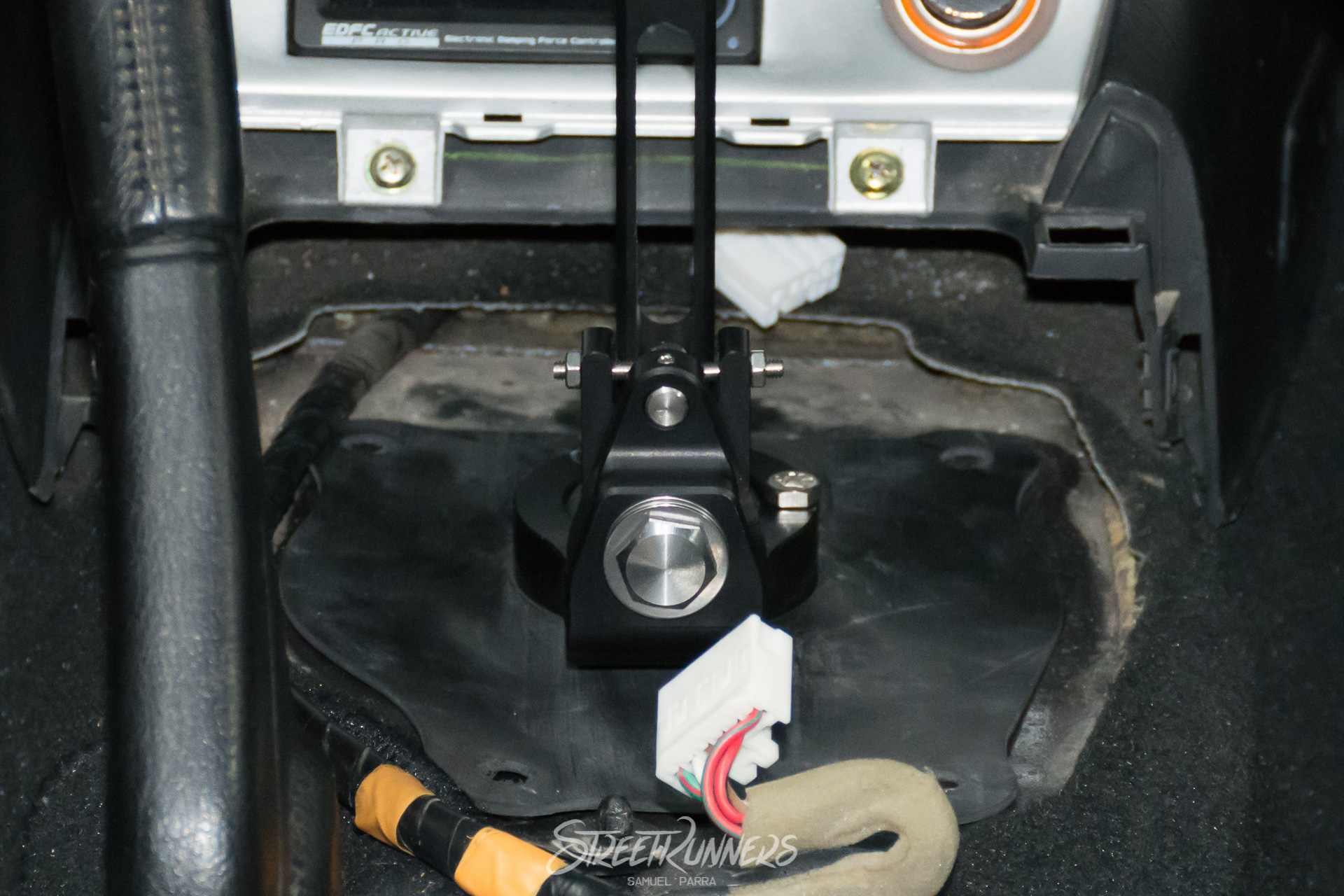 Once the shifter has been installed, the rubber gasket can be also tightened down reusing the four OEM screws. At this
point the install is almost finished, so you can go and test the shifter around the block to make sure that all gears
can be used. If that’s the case, you can install the center console again or leave your new shifter like that for a
racing look.
Once the shifter has been installed, the rubber gasket can be also tightened down reusing the four OEM screws. At this
point the install is almost finished, so you can go and test the shifter around the block to make sure that all gears
can be used. If that’s the case, you can install the center console again or leave your new shifter like that for a
racing look.
DRIVING IMPRESSIONS
This shifter is incredible. I was pretty sceptical because, as I said in the introduction, the OEM Miata shifter is amazing, and when I went for a quick drive around the block to test that everything worked as expected the new shifter height felt very weird, but all of this changed once I drove the car on a twisty mountain road. After having tested it thoroughly in spirited drives, I can say without hesitation that I don’t regret having bought this kit at all.
Gears can still be changed without any difficulty, but they require just the exact amount of extra force now, and you
can really feel you’re into gear once you hear a metallic noise that makes you feel like you’re driving a racecar. The
knob is at the perfect position for fast gear changes, the shifter itself looks sturdy and well built. Shifting gears
is notably faster now, and thanks to the centering spring it’s nearly impossible to miss a 3th-4th upshift and
downshift into 2nd gear instead.
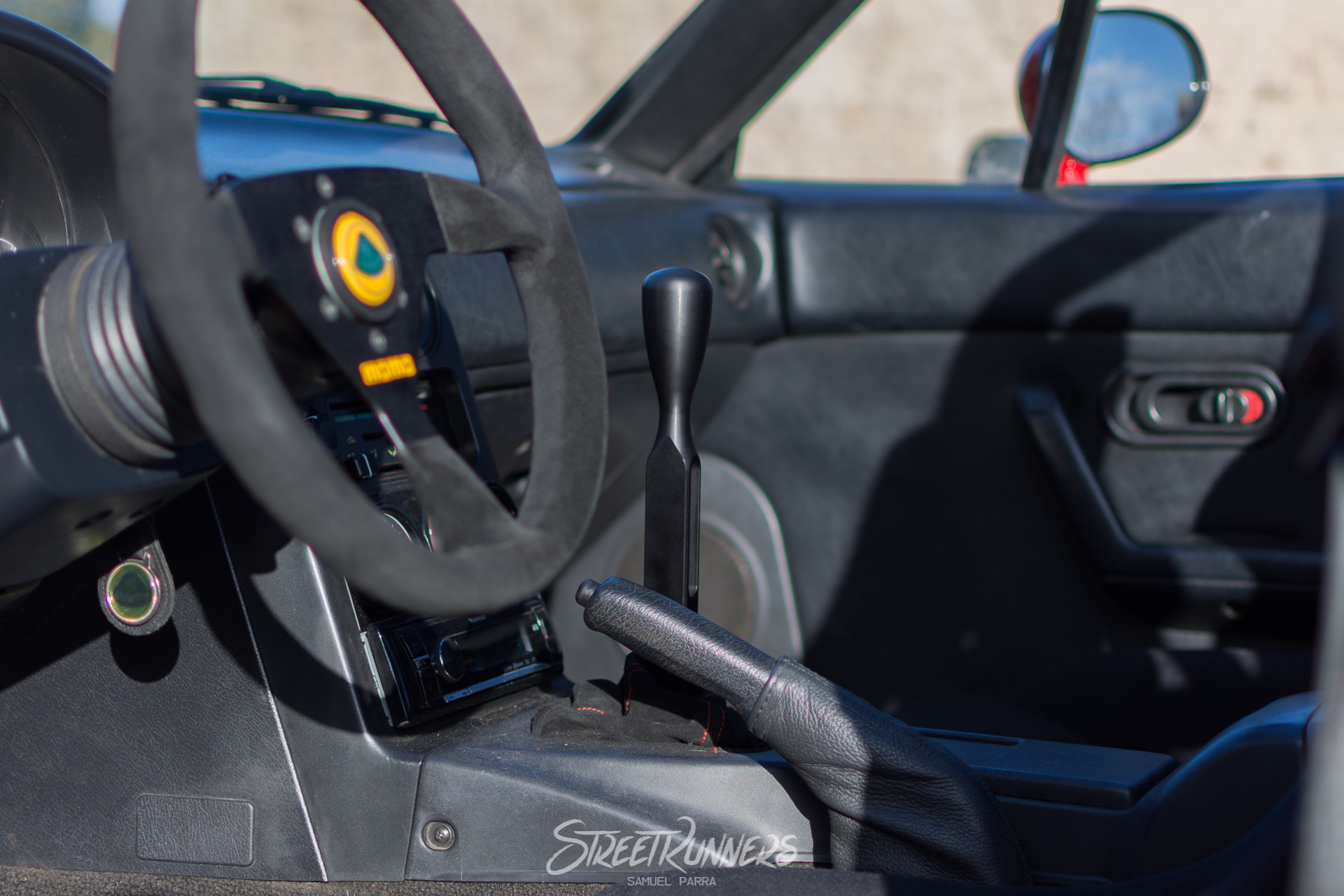 In a nutshell, with regards to driving sensations, this kit improves by a lot the OEM one, which is already very good.
However, it has its downsides too. First of all, because it’s completely made out of metal, it transmits every gearbox
vibration to the cabin and there’s a constant metallic whining noise which gets louder when you’re close to the car’s
redline. I’ve also felt more heat coming out of the center console, although the NA driver told me he didn’t feel any
difference. I believe that this may be caused by the rubber gasket, which looks very flimsy compared to the OEM one.
Maybe shipping the kit with a thicker rubber would solve this.
In a nutshell, with regards to driving sensations, this kit improves by a lot the OEM one, which is already very good.
However, it has its downsides too. First of all, because it’s completely made out of metal, it transmits every gearbox
vibration to the cabin and there’s a constant metallic whining noise which gets louder when you’re close to the car’s
redline. I’ve also felt more heat coming out of the center console, although the NA driver told me he didn’t feel any
difference. I believe that this may be caused by the rubber gasket, which looks very flimsy compared to the OEM one.
Maybe shipping the kit with a thicker rubber would solve this.
So, do I recommend it? It depends. In my case, the Miata is not my daily driver, I use it only on weekends when I feel like going for a drive through back roads or in trackdays, so I’ve been modding it accordingly: chassis braces, a rollbar, coilovers and some missing interior parts have made my car quite noisy, so another one doesn’t bother me that much. In exchange, I have a shifter which has a feel that is quite difficult to find in street cars (the closest thing that I can think of in terms of how the shifting feels like is the Abarth 695 Biposto), and even more in models as cheap as the Miata.
If on the other hand, the Miata is your daily driver, this kit can be too noisy sometimes. Don’t get me wrong, it does
its job very well, but everything comes at a price. It’s up to you to decide if you can live with the added nuisances
that come with this shifter or the OEM one is enough for you.
